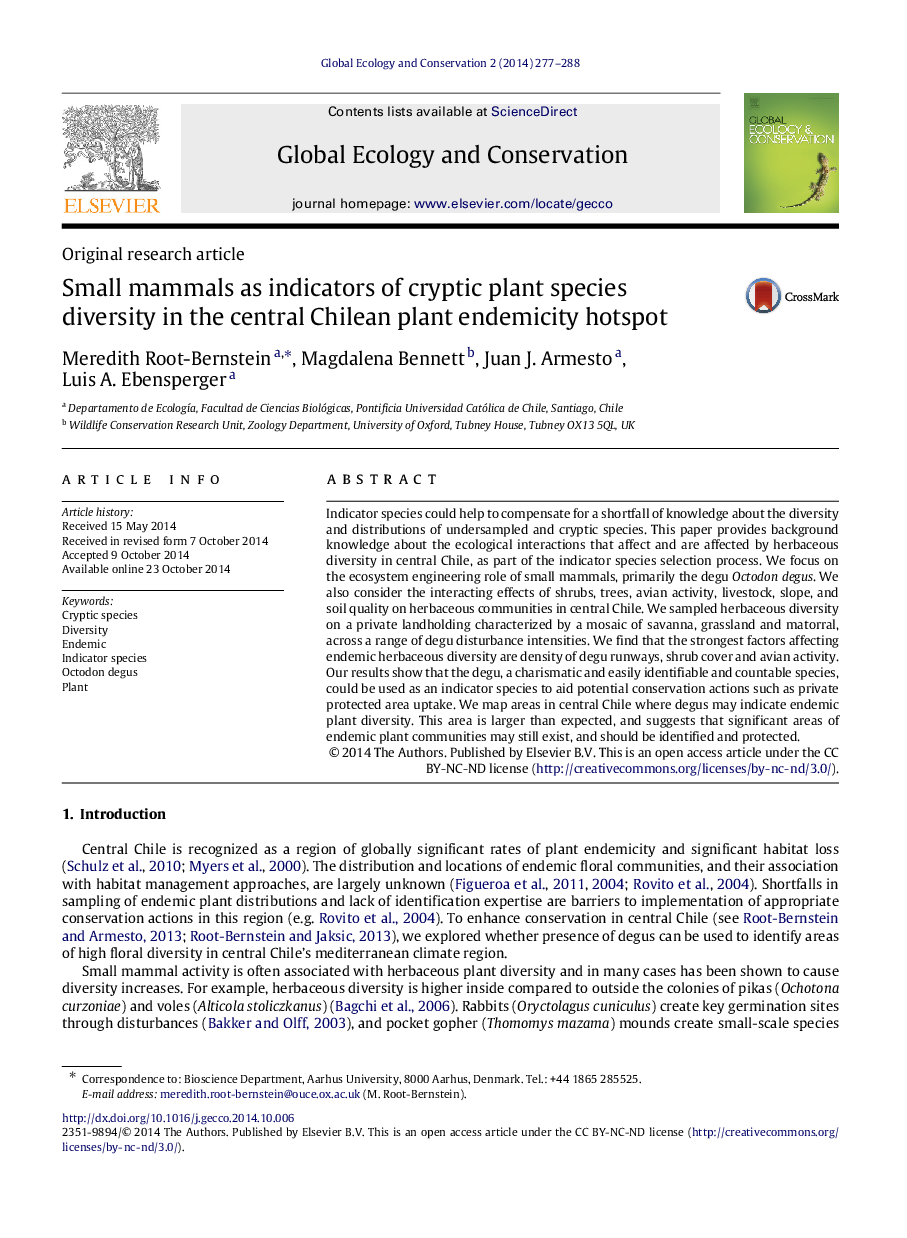| کد مقاله | کد نشریه | سال انتشار | مقاله انگلیسی | نسخه تمام متن |
|---|---|---|---|---|
| 4379690 | 1617665 | 2014 | 12 صفحه PDF | دانلود رایگان |
Indicator species could help to compensate for a shortfall of knowledge about the diversity and distributions of undersampled and cryptic species. This paper provides background knowledge about the ecological interactions that affect and are affected by herbaceous diversity in central Chile, as part of the indicator species selection process. We focus on the ecosystem engineering role of small mammals, primarily the degu Octodon degus. We also consider the interacting effects of shrubs, trees, avian activity, livestock, slope, and soil quality on herbaceous communities in central Chile. We sampled herbaceous diversity on a private landholding characterized by a mosaic of savanna, grassland and matorral, across a range of degu disturbance intensities. We find that the strongest factors affecting endemic herbaceous diversity are density of degu runways, shrub cover and avian activity. Our results show that the degu, a charismatic and easily identifiable and countable species, could be used as an indicator species to aid potential conservation actions such as private protected area uptake. We map areas in central Chile where degus may indicate endemic plant diversity. This area is larger than expected, and suggests that significant areas of endemic plant communities may still exist, and should be identified and protected.
Journal: Global Ecology and Conservation - Volume 2, December 2014, Pages 277–288
